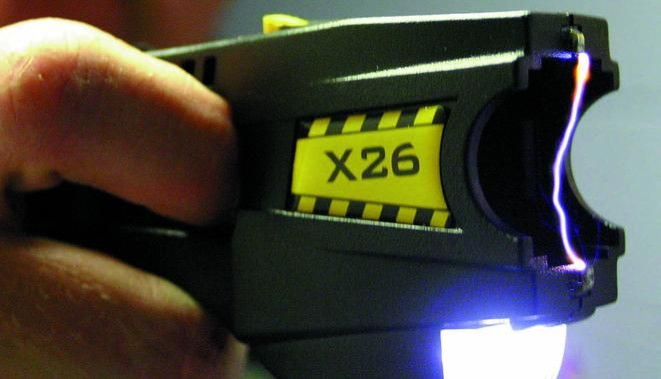Do Tasers Kill? Death Of Florida Teen Stirs Debate Over Stun Gun Safety

Colombian-born Israel Hernandez Llach was running away, unarmed, after being caught spray-painting a shut-down McDonald's when a Florida policeman shot him with a Taser. He died moments later. South Dakota police officers used a Taser on an unruly 8-year-old girl. These are only a few of the hundreds of incidents prompting the public to reevaluate the safety of Tasers, stun guns, and other electrical conduction weapons.
At least they are not bullets, advocates of stun guns say of the weapons believed to save lives. Since they were introduced in 1991, law enforcement agencies across the United States have used the weapons to stop suspects in their tracks. With a range of up to 25 feet, the weapons deliver 50,000 volts of electrical energy transmitted through two electrodes buried into the victim’s skin. The shock stimulates the sensory and motor nerves in the victim’s body, leading to involuntary muscle spasms and paralysis.
But the comparative safety of stun guns leading policemen to carry them still leads to injury. Since 2001, the number of Taser-related deaths in the United States stood at 540, according to Amnesty International. Because Tasers are considered a safer alternative to guns, stun gun users are more likely to pull the trigger, even in cases where force is not warranted. An earlier report by Amnesty International of 300 Taser-related deaths determined that victims were unarmed in 90 percent of cases.
"Of the hundreds who have died following police use of Tasers in the United States, dozens and possibly scores of deaths can be traced to unnecessary force being used," said Susan Lee, of Amnesty International. "This is unacceptable, and stricter guidelines for their use are now imperative."
Tasers Are Rarely Deadly, But Still Deadly
How Tasers and other conducted energy weapons kill is a hotly debated point, especially the weapons’ ability to induce cardiac arrest. The likely answer is that the cause of death in these incidents varies from case to case. Medical examiners after autopsies in Taser-connected deaths point to underlying causes, such as heart conditions or “excited delirium,” a questionable term used to describe drug-induced psychosis. Law enforcement has been documented to have used Tasers with pepper spray, which compromises the respiratory system, leading to suffocation. A handful of deaths have resulted from head injuries sustained from the fall induced by the shock.
Scientific research, too, has yielded conflicting evidence on the topic. A 2012 analysis of 1,201 cases of TASER uses by law enforcement officers found no link between the TASER gun and cardiac complications. The same study, published in the Journal of Emergency Medicine determined that shots to the chest — near the heart and other vital organs, where police are discouraged from shooting — are not more dangerous than shots elsewhere on the body.
However, another study published the same year in Circulation examined eight incidences of cardiac arrest related to Tasers, including seven deaths. The in-depth analysis found that the electric shock did cause electrical activity in the heart to turn fatal.
“This is no longer arguable,” Dr. Byron Lee, cardiologist and director of the electrophysiology laboratory at the University of California, San Francisco, told The New York Times. “This is a scientific fact. The national debate should now center on whether the risk of sudden death with Tasers is low enough to warrant widespread use by law enforcement.”
Did The Taser Kill?
The discrepancy between the two studies’ findings could be explained in their approach. Tasers used on most people harbor few long-term effects, but they are deadly for a small minority. Tasers are used to temporarily paralyze the muscles and nerves, after all, which are exactly the tissues that keep a heart beating.
As for Hernandez Llach, the medical examiner’s investigation as to what ultimately killed him has yet to be released. His father, Israel Hernandez Bandera is waiting.
"I just want some answers," he said in an interview with Reuters. "Was it the Taser? Was it something else?"
When someone is killed in gunfire, the first questions on the minds of scientists and mourning fathers is rarely, “Was it the gun? Was it something else?”
Sources:
Bozeman WP, Teahcer E, Winslow JE. Transcardiac Conducted Electrical Weapon (TASER) Probe Deployments: Incidence and Outcomes. Journal of Emergency Medicine. 2011.
Zipes DP. Sudden cardiac arrest and death following application of shocks from a TASER electronic control device. Circulation. 2012
Image credit: GunNewsDaily.com



























